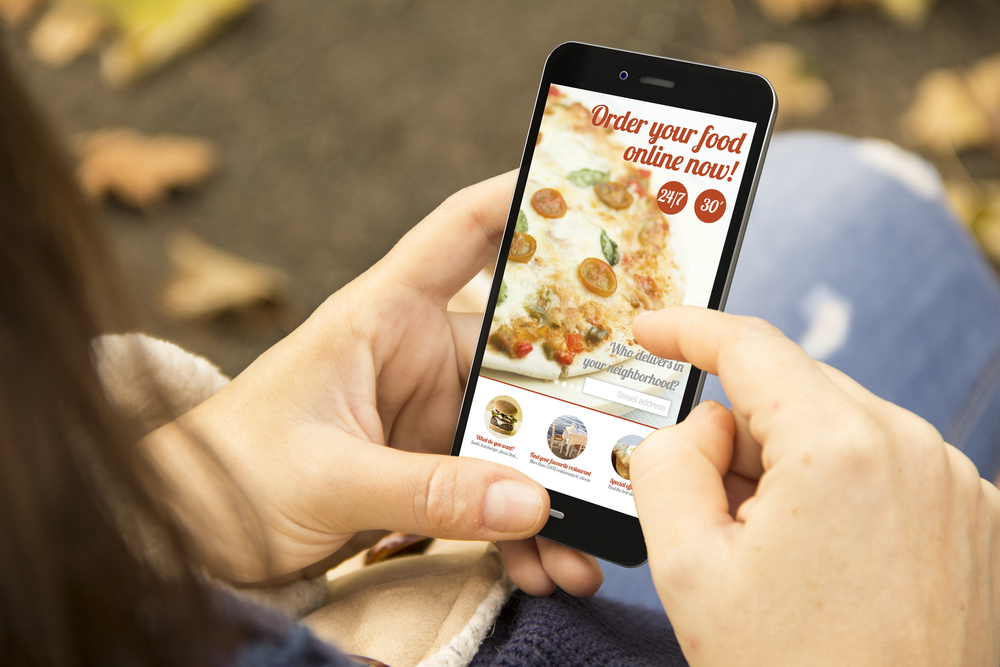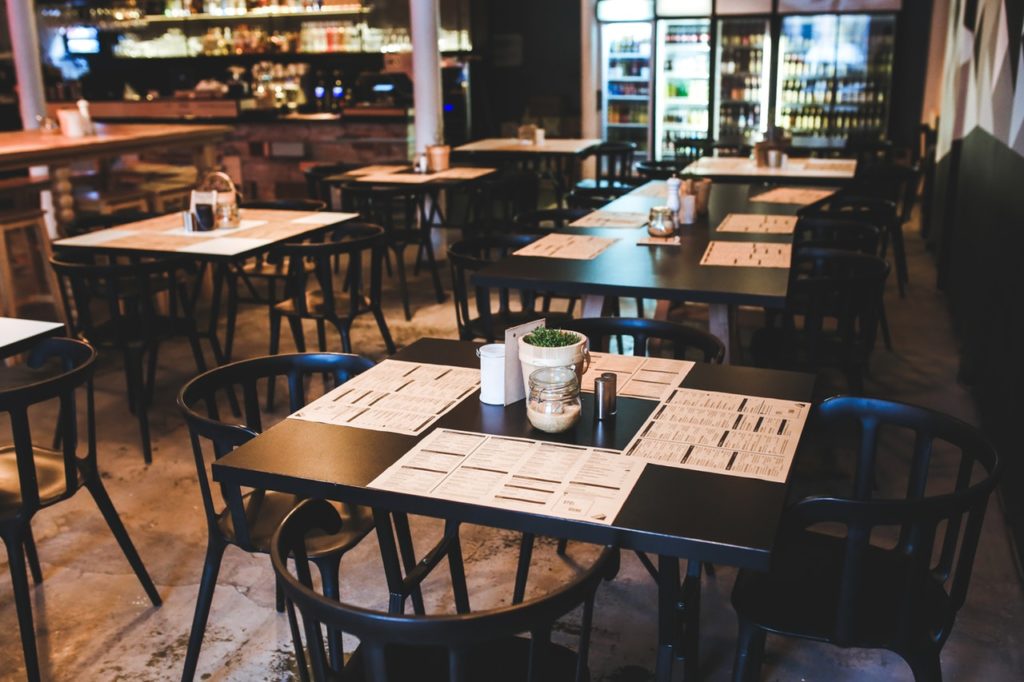In this 7-minute read:
- Why your restaurant’s website is almost as important as the food
- What should a good restaurant website do
- What are the elements of an effective restaurant website?
- Obtaining high-quality photos
- Building additional web presence for your restaurant’s website
- 11 steps to build your site
It was Apicius, in first-century Rome, who is credited with the phrase, “We eat first with our eyes.” In other words, how food is presented visually is an important part of dining satisfaction. But for restaurants in today’s digital marketspace, this principle begins well before your diners arrive at your location. It starts online with your website and your online business profiles.
Nine out of 10 customers’ buying decisions are influenced by what they find online. For all local businesses, a solid online presence is incredibly important for attracting more customers and maintaining good customer relationships. For local restaurants, including tiny, hole-in-the-wall joints or even roadside stands, it’s especially important to maintain a website that tells your story and shows your food in the best light possible.
With Womply Email Marketing, you can turn customers into regulars and get more repeat business with targeted emails that send automatically when customers transact with you. Learn more when you sign up for Womply Free!
Let’s go over some key points and best practices for building an effective, productive website for your restaurant.
What should your restaurant’s website actually do?
Different business types may expect different things from their websites, depending on their business model, type of products/services, and other factors. Your restaurant’s website has the potential to contribute instrumentally in the following aspects of your business, at a minimum.
Marketing
84% of consumers conduct local searches, and that includes people looking for places to eat. Your website (and your online review site profiles) are absolutely vital in attracting new business and directing customers to your restaurant.
Even if people ask their friends and coworkers “do you know any good places to eat around here?” and receive personal recommendations for your restaurant, chances are they are still going to check your online presence, read some reviews, and look at your website/menu before they make up their mind to actually visit and spend with you.
Sales
Even before the global coronavirus pandemic, online sales for local restaurants were growing exponentially, as more customers have grown to expect online ordering, takeout, and delivery options from even the smallest of local restaurants.
Your website can be a key cog in your sales machine, and many restaurants have found that getting up to speed on the takeout/delivery side of their restaurant has helped keep them alive—and even growing—during an unprecedented consumer drought that has killed many businesses.
If you haven’t yet seen the light and gotten your business set up for online ordering and delivery, you can learn more in this article
You may also like: 9 reasons your restaurant needs online ordering and delivery

Customer service and relationship management
Just as your website is instrumental in “top of the funnel” sales prospecting, it is also key in maintaining good customer service and relationships to improve future repeat sales. Many of today’s customers are reluctant to share their concerns or problems with waitstaff or restaurant managers in person, but will often attempt to rectify any issues afterward using your website and/or review platform profiles.
Your website can be the main interface between your customers and your customer service team (even if that’s just you).
What are the elements of a good restaurant website
Let’s talk about what elements or features your restaurant’s website should have to be most effective.
1. Your website should have clear, accurate, up-to-date information.
As many of us have found during the COVID-19 lockdown/reopening/reclosure craziness, Google/Siri/Alexa/Whoever doesn’t always have the most accurate information about whether your restaurant is open, whether dine-in service is currently open, whether you offer takeout/delivery, whether your published hours are accurate, whether your menu selections have been revised, whether you have any additional restrictions or special instructions customers need to be aware of, etc.
Your website should be the first place people can go to get current, accurate information about this and any other issues they need to know about.
Even if all you can manage right now is a clean-looking website with current, correct contact and location information, and maybe a simple menu, this will go a long way toward attracting more customers and improving your local SEO.
You may also like: Why every small business still needs to have a website
2. Your restaurant’s website should have a “clean” design, look, and feel
For restaurants, cleanliness is paramount above everything else. If your website looks cluttered, outdated, messy, or unattractive, people will assume your restaurant and food are sub-par.
Resist the temptation to use free stock photo sites to make your place look better than it actually is. People can tell if you’re faking it, and even if you convince some people to visit, they’re just going to be disappointed and even angry when they see the real goods.

Use professional-quality photos (see below) and have someone help you go over your website’s design, layout, color scheme, and function. Aim for a stellar, intuitive user experience (UX).
Have a look at these helpful articles:
- How to design a simple website for your small business
- How to build your own small business website (step-by-step walkthrough)
3. Your website should feature high-quality images of your food and location
If we eat with our eyes first, the photos of your food you feature on your website should be as good as they can be. Customers will be posting their own cell-phone pics of your menu offerings all over your online review platforms. Hopefully they reflect the quality and flavor you aim to produce. You have some control over the images on your review platform profiles, but you have absolute control over your own website.
For your photography of your food for your website, you should consider hiring a food stylist and a professional photographer (sometimes they are one and the same) to make your menu items look as good as they possibly can.
Check out these articles to learn how to get professional-quality photos for your business:
- Top 3 ways to get (and use) professional quality photos for your small business
- DIY photography guide for small business owners
4. Your website should feature your up-to-date menu
Even if you change your menu daily, it just takes a few seconds to update your online menu along with your chalkboard or printed menus.
When people are searching online for specific menu items near them (and they do), they want to be confident that they can find the deep-fried octopus balls with shaved bonito flakes that they expect when they arrive at your place.
Many restaurants have had to trim down or otherwise simplify their menus during the pandemic, and your website should be relied upon to have the absolute latest information to avoid surprises for your diners. Do your best to update your online review platform information as well.

5. Your website should support and grow your brand
Your restaurant’s website should be an extension of your physical space. If your restaurant is informal and playful, your website should feel the same. If you’re aiming for a Michelin-star type experience in your restaurant, then your website had better be up to scratch and feel as high-end as your custom hand-blown aperitif glasses.
Think about every aspect of your website design. Think about the fonts you use. The use of space. The color schemes, the layout, the dropdown menu, the function of each link. All of this matters. All of these things are elements in creating and supporting your restaurant’s brand identity.
Check out this article: How to create and build an effective brand
Don’t forget your Yelp, OpenTable, TripAdvisor, and Google My Business pages
Your website is a vital component, even the keystone, of your online presence. However, your online review site profiles are also incredibly important. Make sure you claim your online business profiles on Yelp, OpenTable, TripAdvisor, and Google, at a minimum.
Keep these profiles updated with your correct contact info, menu, and hours of operation, and remember to reply to your reviews. This helps improve your local SEO.
Remember to maximize the benefits of your social media accounts
Facebook and (particularly) Instagram are great for restaurants, as they are visually focused and allows tons of customization and special offers. You can use Instagram advertising and Instagram Stories to boost customer knowledge and generate interest.
Studies show nearly 7 out of 10 Instagram users regularly engage with brands, which is huge. You want and need people interacting and engaging with your restaurant, and social media can be a very effective part of your online strategy.
So use these tips to get your restaurant’s website and online presence up to scratch so it can start working for you and bringing in new customers.
Need help improving your restaurant’s online visibility? Try reputation management software
You can build a strong website, but you still need to keep your online reputation strong by getting regular online reviews and managing your online directory listings. This helps your website and review profiles show up higher in local searches. Womply can help!
Womply Reputation Management allows you to read and respond to all of your online reviews with one login in one place, and helps you to remind your customers to leave new reviews.
Womply also offers business intelligence, customer relationship management, email marketing, payments, and a proprietary, dynamic customer directory that updates automatically with each transaction.
Learn more, plus get free reputation monitoring and customer insights when you sign up for Womply Free!